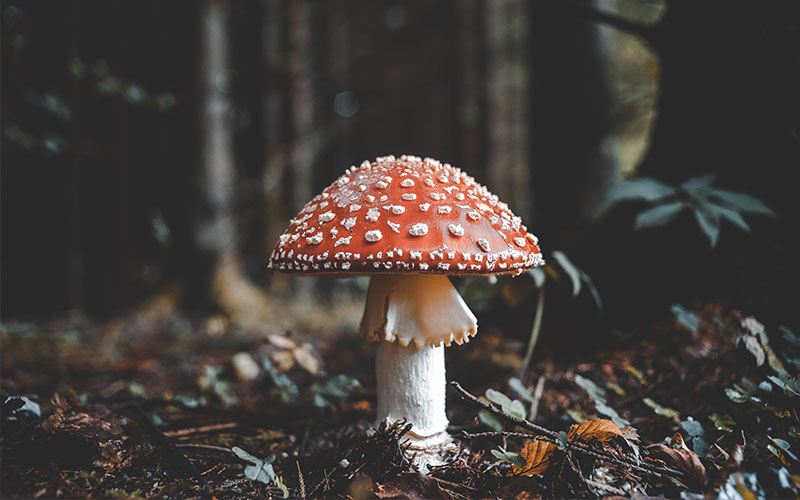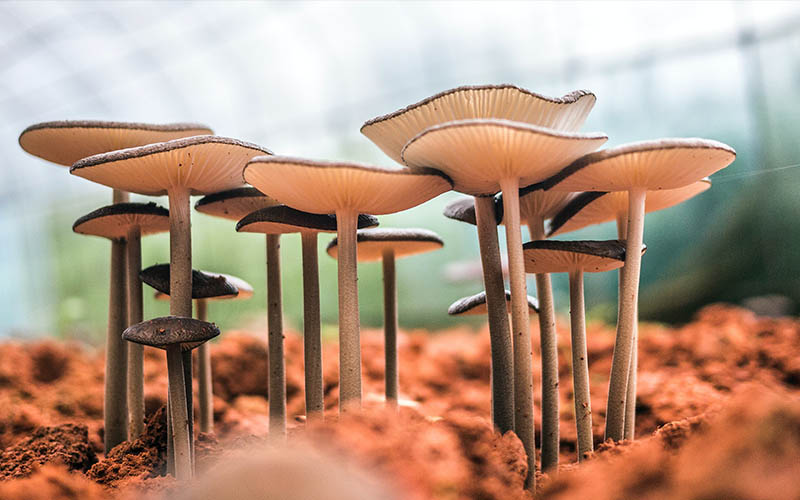If you look at the mushrooming-calendar, the best time to mushroom hunt come out in autumn around the end of September, and continue well into late November. In essence, this is the busiest time of year for mushroom collectors because some of the most valuable specimens are now ripe for the picking (Ceps, Chanterelles, Hedgehogs, etc.).
When is the best time to go mushroom hunting? is a question we get asked frequently, and it’s something we ourselves wondered when we first began our adventure in foraging for wild foods. Fortunately, it’s a fairly straightforward question to answer.
Table of Contents
Mushrooms Features
In that they prefer moist, damp, and humid environments, mushrooms are quite similar to one another. They typically enjoy to show up following a period of intense rain, during an otherwise quiet dry spell. A good season for mushrooms is typically one that has experienced plenty of rain (but not significant flooding). However, some seasons are better than others for mushrooms. If it has been an Indian summer with extended dry spells throughout the fall, this does not bode well for the mushroom season. Even a little rain may not be enough to encourage mushroom growth if the ground is too dry. Therefore, in a perfect world, or to put it another way, the best time to go mushroom hunting is right after a period of intense rain.
To that end, you cannot wait for it to stop while holding your wooden basket and zipping up your anorak as you sit by your window and look gloomily outside. No, you must wait to allow the mushrooms to grow, which happens surprisingly quickly (if you’ve ever grown mushrooms yourself, you’ll understand what we mean). The mushroom can start to pin and then start to grow in as little as a few hours. After a few days, it will be fully grown-up size, with its cap unfolded and spores released. This is the ideal time to harvest the mushroom – once it’s had a chance to “reproduce”.
Where to Go
Fungi are fascinating because they can be found almost anywhere. Parks, backyard lawns, gravel roads, road shoulders, pastures, river bottoms, and forest areas.
The national and state parks of Washington State are a great place to start if you’re going on a walk in the woods with the intention of looking for mushrooms. Go for a hike on a trail! Location, location, location—as with anything else.
The species of mushrooms differ greatly from region to region, so understanding the kinds of mushrooms that grow there will help you forage more successfully and with greater knowledge.
Following are four locations in Washington State where you can probably find some edible mushrooms if this is your first mushroom season.
Olympic Peninsula
Home to the Olympic National Park, the Olympic Peninsula is located across Puget Sound.
But for mushroom hunting, there are two areas that are of great importance: The Hoh Rainforest and Dungeness Trail Upper.
I’ve personally walked through both locations and discovered a profusion of boletes mushrooms.
North of Seattle
The areas north of the Ship Canal are loosely referred to as North Seattle.
Whidbey Island and Snohomish County are two locations with a lot of potential for mushroom hunting. Both have a reputation for producing delicious foods.
Southern Cascades
The South Cascades in Washington begin at the Columbia River and go all the way to Interstate 90. Three volcanoes, Mount Rainier, Mount Adams, and Mount St., are located in the province. Helens.
Chanterelles, shaggy mane, and matsutake mushrooms can be found in the vicinity of Mount Rainier and Mount St. Helens.
Eastern Washington
Eastern Washington, located east of the Cascade Range, is renowned for its cutting-edge amenities and breathtaking scenery.
But if you want to find morel mushrooms, you need to go to the Okanogan-Wenatchee National Forest.
If you find any, consider yourself lucky because a pound of these mushrooms costs about $30.

What to Bring
Here are some ideas for gear you might want to think about packing as you leave for the trail.
Basket Or Paper Bag
For the sole purpose of collecting mushrooms, many people bring a separate basket or bag from their hiking bag. By doing this, they are kept apart from things that could hurt or harm them.
To help absorb any extra moisture and prevent them from becoming slimy, you might also want to pack a cloth or some paper towels to place inside the bag or basket.
Knife
If you’re picking mushrooms, it doesn’t matter if you cut them or pull them. Do whatever you want because there is no discernible difference between the effects of either method on the organism.
I find that using a knife makes for a cleaner cut and less likely to cause damage to the mushroom, so I personally prefer to use one when harvesting.
Mushroom Identification Apps
For those who are new to foraging, there are a ton of helpful resources available because we now live in the age of technology. Two useful free phone apps are “Shroomify” and “Google Lens”. A useful paid app is “Mushroom ID: Picture of a Mushroom”
You can take pictures of the mushrooms you’ve found using Google Lens and Picture Mushroom, and the app can help you identify them.
Shroomify is more of an electronic field guide and relies on your ability to describe characteristics of the mushroom to aid in identification.
Field Guide
It’s a good idea to buy a field guide so you can save your phone’s battery and have a secondary way to confirm your initial identification.
What to Look For
Some environmental and terrain-related indicators can aid you in your search for mushrooms as you set out on your journey.
Many species can be found growing underneath certain types of trees because they coexist harmoniously with that particular tree. In the vicinity of fir and spruce trees, for instance, king bolete mushrooms are frequently discovered.
On the other hand, some fungi are saprotrophic, which means they take their nutrition from decomposing organic matter and might even parasitize their host. Oyster mushrooms, for instance, are frequently discovered on or close to dead or dying alder trees in Washington State.
You can make some planning based on specific types of terrain and trees if you have an idea of the wild mushrooms you’d like to look for.
Mushroom Harvesting Guide
Seasons
Spring
Depending on a number of variables, such as temperature and snow melt, the spring mushroom season typically starts in late April or early May. Typically, it continues into July.
Fall
It starts in late September or early October and lasts through November. Weather also has an impact on the start of the season.
Helpful Tips
It can get quite cold during both of our mushroom seasons, so prepare by dressing for the conditions. Bring a paper or cloth bag with you to transport your mushrooms because plastic traps heat, prevents ventilation, and encourages decay. Use a pocket or belt knife to separate the mushroom from the stem and, if necessary, cut it in half.. A mushroom you are unsure of should NOT be touched because it might make you sick.
Surround Yourself With Like-minded People
There are clubs and organizations that organize guided excursions and disseminate knowledge. This is a fantastic way to get to know other mushroom hunters, discover the fundamentals of mushroom hunting, and find out what kinds of mushrooms are most frequently harvested in your region. You can also join several Facebook groups where people discuss foraging and identification.
Finally, despite the fact that at first glance, everything may seem overwhelming, I never used to notice mushrooms while hiking. I see them all the time now that I’m interested in foraging and photography. A little practice is all it will take for you to develop an eye for foraging.
Are you prepared for your upcoming outdoor adventure?
For suggestions and practical advice, look through our other blog posts. Every piece of new content we publish is written from a local’s perspective.
Do you have any advice of your own? Comment down below.


